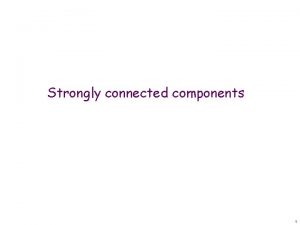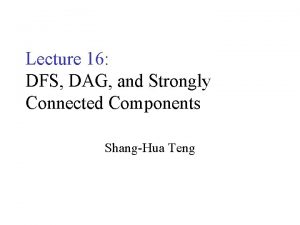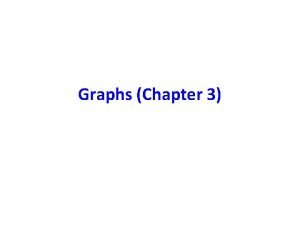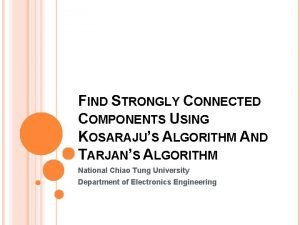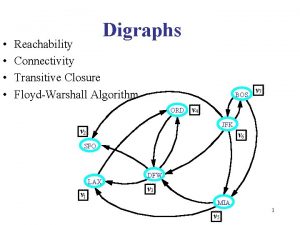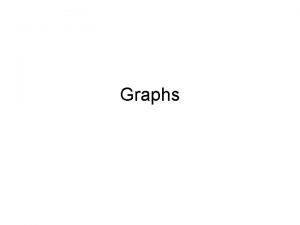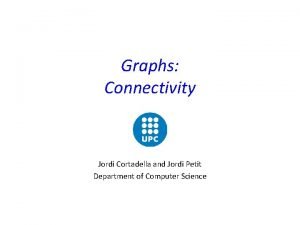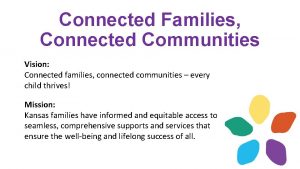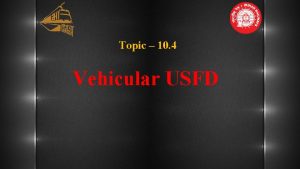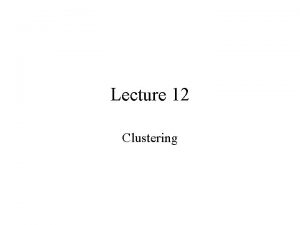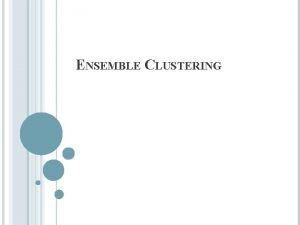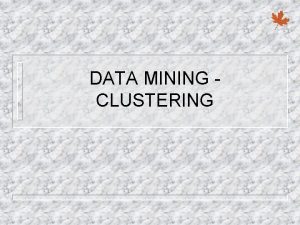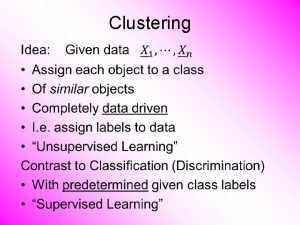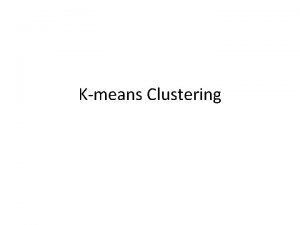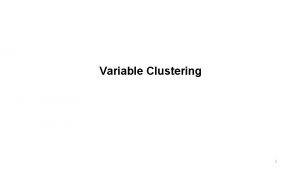Toward Strongly Connected Clustering Structure in Vehicular Ad













- Slides: 13

Toward Strongly Connected Clustering Structure in Vehicular Ad hoc Networks Zaydoun Y. Rawshdeh, Syed Masud Mahmud Electrical and Computer Engineering Department Wayne State University, Detroit, MI, USA Presented by: Sanaz Khakpour Master of Computer Science Student 1/5/2022 1

Objectives • Use clustering techniques in order to decrease the dynamic topology of VANETs as much as possible. • Cluster the nodes with most similar mobility pattern using direction, location, and speed. • Partitioning the network to minimum number of clusters. • Using a multi-metric election technique to choose the best cluster head. • Increase cluster stability considering changes in the network topology which have direct effect on stability. 1/5/2022 2

Identifying Candidate Cluster Member • Degree of speed difference is a key feature to build stable clusters. • The position information (sent in periodic messages) of vehicles is being used to build neighbourhood relationship (r-neighbour). • Nodal degree is the total number of r-neighbours of a node. • Neighbour nodes moving in the same direction are supposed to be candidate cluster members (CCM). • Neighbours are classified to SN (r-distance, same direction, close speed) and UN. • All SN which do not belong to other clusters are CCM. 1/5/2022 3

Identifying Candidate Cluster Member • 1/5/2022 4

Protocol Structure • Control channel: is being used to send periodic messages and gain information about neighbours. (Transmission range R). • Service channel: is used to create cluster and send intra-cluster messages and cluster management. (Transmission range r < R). • Because R=4 r, vehicles can obtain complete information about their neighbours (can be beyond cluster boundaries) • Any vehicle can understand if its speed is less than all its nonclustered neighbours in R distance range. That vehicle is supposed to start cluster formation. 1/5/2022 5

Cluster Radius • DSRC (Dedicated Short-Range Communications) is a multi-channel interface with various transmission ranges. • Neighbourhood definition depends on the used channels. • Vehicles u and v are neighbours in control channel’s perspective. But u and w are neighbours from the perspective of both channels. 1/5/2022 6

Cluster Formation • Each vehicle keeps a list of 2 -r neighbours at time t (Γ(t)). • Γ(t) is divided into Γ(t)_G and Γ(t)_L which are vehicles with greater and lower speeds respectively. • The vehicle with lowest speed among its neighbours starts cluster formation. It is called cluster originating vehicle (COV). • COV sends its ID to all Γ(t)_G as temporary cluster ID. All non clustered members set the cluster ID. • Vehicles calculate their suitability to be a CH and announce it if their value is higher than previously received values. Suitability value is compared with only r-neighbour members of Γ(t)_G of COV. 1/5/2022 7

Cluster Rules • Vehicles that can’t connect to the cluster stay non-clustered (default state) and start cluster formation process again. • A node joins cluster if its relative speed to CH is in the threshold. • The members should stay in r-distance range. Otherwise, they will lose their membership. • Two clusters can merge if: ü The distance between CHs are less than r. ü The difference between average speed and both CH’s speed is in a threshold. 1/5/2022 8

Cluster Head Selection • 1/5/2022 9

Cluster Head Selection • 1/5/2022 10

Simulation Results • 1/5/2022 11

Simulation Results 1/5/2022 12

Questions • What parameters are used for calculating mobility metric? • What are Γ(t)_G and Γ(t)_L in cluster formation process? • What is he paper’s most important objective? 1/5/2022 13
 Flat clustering
Flat clustering Divisive hierarchical clustering example
Divisive hierarchical clustering example Euclidean distance rumus
Euclidean distance rumus Number of strongly connected components
Number of strongly connected components Strongly connected graph
Strongly connected graph Strongly connected components
Strongly connected components Kosaraju algorithm strongly connected components
Kosaraju algorithm strongly connected components Strongly connected
Strongly connected Strongly connected components
Strongly connected components Strongly connected components
Strongly connected components Law of conservation of momentum
Law of conservation of momentum Extricación rápida
Extricación rápida Vehicular cloud
Vehicular cloud In a ∆-connected source feeding a y-connected load
In a ∆-connected source feeding a y-connected load



